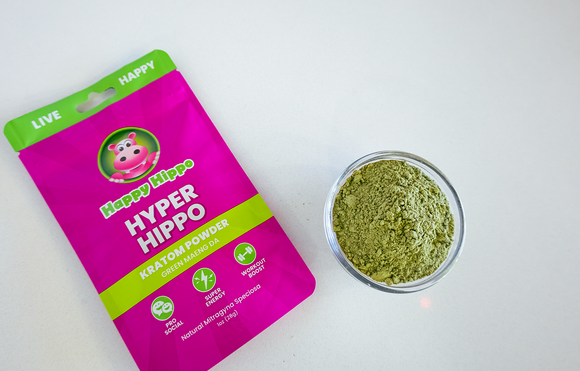Where is Kratom from?
Mitragyna Speciosa (aka Kratom) is an herbal tropical evergreen tree that is part of the Rubiaceae species of plants. Rubiaceae is a family of flowering plants commonly known as the coffee, madder, or bedstra family.The leaves of this tree are what we will be focusing on as they are where you find all of the wonders of this plant. Kratom is indigenous to the Southeast Asia region of the world… Thailand, Indonesia, Malaysia, Myanmar, and Papua New Guinea. The majority of the world's Kratom comes from Indonesia at the moment. It has been used in these regions for centuries for many different purposes, from Energy to Discomfort Relief. Kratom has been consumed in Southeast Asia since the early 1800’s and while it is difficult to determine when exactly Kratom arrived in the US, we do know it began to increase in popularity in the early 2000’s and has seen a continuous growth ever since.
What makes Kratom so special?
Kratom leaves contain at least 40 Alkaloids that we have counted so far with the ability to react in the body but at the moment, we can only get accurate tests for 7 of them. While Mitragynine and 7-hydroxymitragynine (7-OH) are the two most common that people associate with Kratom, they are not the only important Alkaloids. Other Alkaloids such as Paynantheine, Speciogynine, Speciocillatine, Mitraphylline, Isorhynchophylline, and Corynoxine also play a role in how the leaf will interact with individual consumers of Kratom. We believe that it is the combination of all the Alkaloids together and how they work as a team that makes this plant so special, and gives each individual strain its own identity.
What are Kratom Strains?
There is some speculation among Kratom Veterans about whether or not Kratom “Strains” exist. We do believe that there are differences when it comes to the age of the leaves and how they resonate. The Alkaloids develop in stages and become more potent throughout the plant's life cycle. The Farmers are the ones that decide when the leaves are ready for harvest. Each strain gets its defining features from its vein colors. As the plant ages, the veins go from white (youngest), to green, to red (oldest). White Vein Kratom strains will have the least amount of 7-OH, while Red Vein Kratom strains will have the most. In addition to this, the soil that the plant is grown in will contribute to the levels of the other Kratom Alkaloids present in the leaves. This is why you will sometimes resonate differently between vendors for the same strains… odds are that they are getting their leaves from different farmers!
Kratom Advocacy
Most of the information about Kratom is anecdotal but with the help of organizations like the American Kratom Association there are scientific studies being conducted to dispute and dispel myths on Kratom, however the need for more research and better practices is imperative for the safety of the Kratom Consumer. The American Kratom Association is a group of people who are fighting every day to make sure those who take Kratom have access to safe products. It is estimated that 10-16 million Americans use Kratom regularly and their safety is top priority. The Kratom Consumer Protection Act is a bill that standardizes good practices of Kratom production and labeling, bans adulteration, and limits artificially increasing the levels of the active Alkaloids Mitragynine and 7-OH in a product. This will help to provide a consistent and trustworthy product for those who want to go take a more holistic approach to their wellbeing.
Wrapping Up
Kratom is a valuable botanical that deserves more scientific study. These additional Kratom studies could uncover the plant’s true potential, and help everyone in the world understand the good it can do. That being said, Kratom certainly isn’t for everyone and it does come with some risks, but increased research can help to identify these more specifically making for a safer experience for everyone.
Unfortunately, we are not qualified to provide medical advice. If you have specific medical questions about how Kratom can be incorporated into your life, please refer to a physician.
However, if you have general questions about Kratom and its effects, feel free to contact our amazing customer service team! All of our agents have first-hand experience using Kratom. We are passionate about helping you along your Kratom journey.
If you’d like to try a free Kratom sample, check out our website! We offer FREE samples to new customers. No shipping costs or hidden fees. We have the best Kratom ever (try it and see for yourself)! Seriously. All of our products are lab-tested, sterilized, and packaged in our GMP-compliant facility.
Not sure where to start?
Check out our 3-Strain Newbie Starter Pack or our Kratom Sales selection.
Disclaimer: Kratom remains unregulated by the FDA, the authors of this text would like you to note that although this article contains many points regarding the use of Kratom, they should only serve as a piece of information - not medical advice.
Kratom is not intended to cure, diagnose, treat, or prevent any disease or condition.
Make sure to speak to a physician if you have questions before using Kratom.






















New Comment
Please note that all comments are reviewed and must be approved before being published.